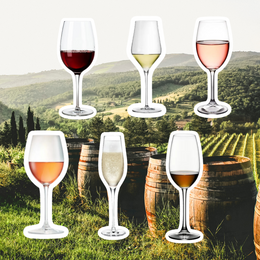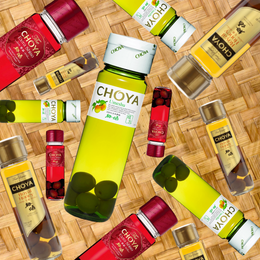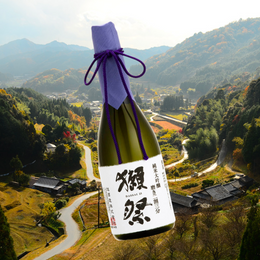
While medieval monks of Ireland and Scotland were first to distil “uisge beatha”, the water of life reached the New World around the late 17th century. It has continued to evolve thence and served as a companion to Americans through many wars, rebellions, victories, prohibitions, depressions and economic boom. The American whiskey of today is a distinctive product of its own with a rich, oily history and several distinctive regional styles.
In this article, we would cover some brief history of distillation in the early American frontier, how the special features of American whiskey came to be, and the most important styles of American whiskey.
How the American whiskey story began

Notice that only the Americans and the Irish refer to their water of life with an additional “e” as in whiskey. This is because the history of whiskey distillation in America was started by early Irish settlers in states of Tennessee and Kentucky. These early farmers did not make whiskey just to get drunk and chase a high. From time to time, farmers would experience bumper crops that would provide too much bread or beer to finish consuming in the short term. Turning it into high proof liquor was the only reliable way to prevent their surplus produce from perishing.
Producing whiskey made great business sense for these farmers: not only do they get a new source of profit by selling the whiskey (not least that transportation cost was much cheaper- corn whiskey was about six times cheaper to transport than actual barrels of corn) the farmers could also use the by-product of the fermentation process (a porridge-like mash of corn and barley) as cattle feed. It wasn’t difficult to find buyers either. Since there was not a great deal of entertainment in those times, nearly everyone would love a dram of whiskey.
Rye, Corn and Wheat
While barley is the main component of Scottish malt whiskey, American whiskey is rarely made from just barley. European barley was difficult to cultivate in America’s the early days.

Rye, on the other hand, is closely related to barley, indigenous to America and could be easily grown. Scots-Irish distillers who settled in Pennsylvania figured they could use rye to make their whiskey- and thus American rye whiskey was born.

Not long after, George Washington approved an excise tax on liquor that was highly unpopular and resulted in serious revolts and rioting known as the “Whiskey Rebellion”. Whiskey became hard to come by and fighting posed a danger to daily livelihood. During the Rebellion, some Pennsylvania farmer-distillers decided to flee to the mountainous Kentucky region where Washington’s troops could not easily enter and enforce the liquor tax. The Bluegrass State’s fertile soil and sweet limestone water is perfect for growing corn. The newly-settled farmer-distillers lived their best lives away from the evils of liquor tax and made lots of whiskey with corn – and thus the American bourbon whiskey was born in Kentucky.

As settlers moved West into the Midwestern States, wheat was increasingly adopted as it was more abundant. This eventually led to the creation of what is known as wheat whiskey and “wheated” bourbon (bourbon with significant wheat content).
Only Virgin Oak Barrels
The most important category of American whiskies is bourbon. What is peculiar about American bourbon is that bourbon can only be made from maturation in new or “virgin” oak barrels. Why is that? There are two reasons.
Protecting lumberjacks

Fast forward about a hundred and fifty years from the Wild West era, the stock market crash of 1929 plunged the country into the Great Depression, years of economic hardship and joblessness for millions of people. It was said that the timber industry exerted significant influence in the US Congress then in seeking tax relief, subsidies and policies to preserve jobs and increase revenue.
On 1st July 1938, the government approved regulations requiring all bourbon to have been aged in “new” oak barrels. This meant that barrels could not be reused, and must be discarded after maturing only one batch of bourbon! New barrels had to be constantly sourced from the timber industry in order to produce more bourbon.
Good old bourbon-making pride

Cynics have suggested that the “new” oak regulation was solely intended to benefit the American timber industry and preserve jobs. In fairness, the use of virgin oak barrels is also chemically beneficial to the bourbon maturation process in a way.
New oak is more watertight than used oak, thus reducing leakage and oxidisation of the whiskey. New oak also contains much more natural flavour compounds than used oak- compounds such as wood sugars or hemicellulose (responsible for the caramel factor), tannins and oak lactones (responsible for toasted coconut flavour). Used barrels on the other hand are arguably lacking in these flavonoids and would yield a duller flavour.
We can also attribute this once-and-done policy to the American pride of making good quality bourbon.
The varieties of American whiskey

All bourbons are whiskey but not all whiskey are bourbon. With that bit of history out of the way, let’s look at the main styles of American whiskey and their features.

Traditional Bourbon (70-80% corn or more). All whiskey labelled as “bourbon” must be fermented from a mash containing at least 51% corn. Inevitably, some malted barley would be added to introduce enzymes essential to kick start the fermentation process. Small quantities of rye or wheat may be added to this mixture, but it remains primarily corn-focused.
Corn results in high levels of fermentable sugars. This produces a sweet, oily and viscous spirit with notes of vanilla, oak, caramel and baking spices like cinnamon.
Typical examples of traditional bourbon include Buffalo Trace, Elijah Craig, Evan Williams and Wild Turkey.

High-Rye Bourbon (at least 51% corn, up to 30% rye). Purely corn-based bourbon is sweet, but some drinkers claim this lacks complexity. Certain producers therefore add rye into the mash, adding a bit of kick; a lightly peppery, clove-like spiciness that compliments the sweetness of corn. This also does not have the full-on without the intense heat of a true rye whiskey (more on this below).
Typical examples of high-rye bourbon include Bulleit, Blanton’s and Four Roses.

Wheated Bourbon (at least 51% corn, up to 30% wheat). On the other end of the bourbon spectrum, distillers may add wheat in place of rye. This creates a nice smooth texture in the bourbon with additional sweetness and elements of cereal and malt.
Typical examples of wheated bourbon include Maker’s Mark, WL Weller and Pappy Van Winkle.

Rye whiskey (at least 51% rye). The flipside of bourbon whiskey is rye whiskey. These are made with the same requirements of bourbon but with at least 51% rye instead. Rye whiskies are known to impart an intense spicy, grassy and fruity flavour with less sweetness than bourbon.
Typical examples of rye whiskey include Sazerac and WhistlePig.
Aging requirements
As mentioned above, bourbon must specially be aged in virgin oak as observed above. There is no prescribed requirement in the US for how many years the bourbon must be aged. However, all American whiskey labelled as “STRAIGHT” must be aged for at least two years.

And here are your basics of American whiskey! Go forth to your liquor bar and order your bourbon with the confidence of a Wild West gunfighter.

@charsiucharlie





